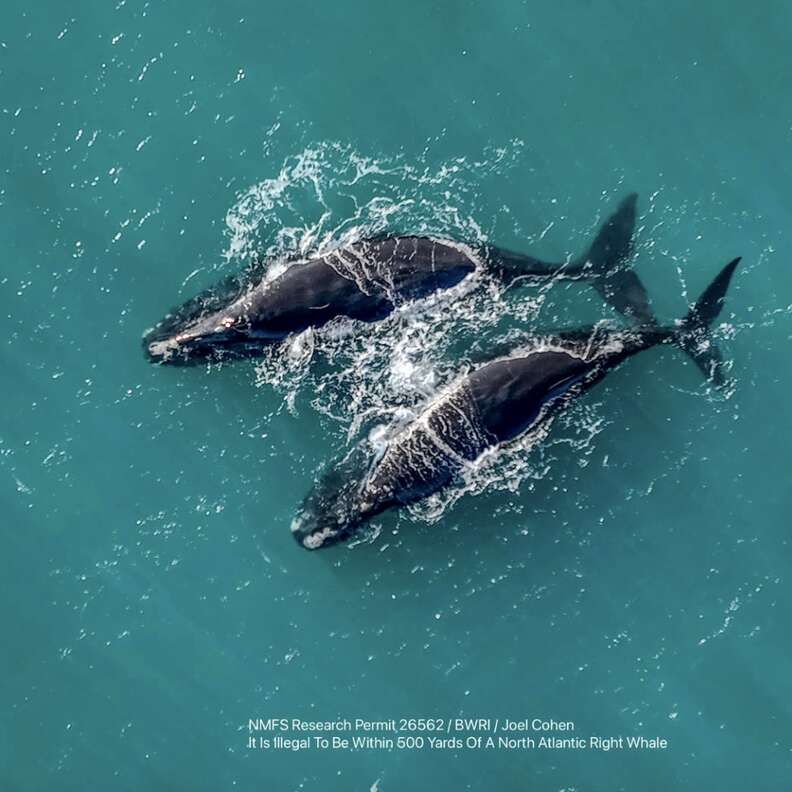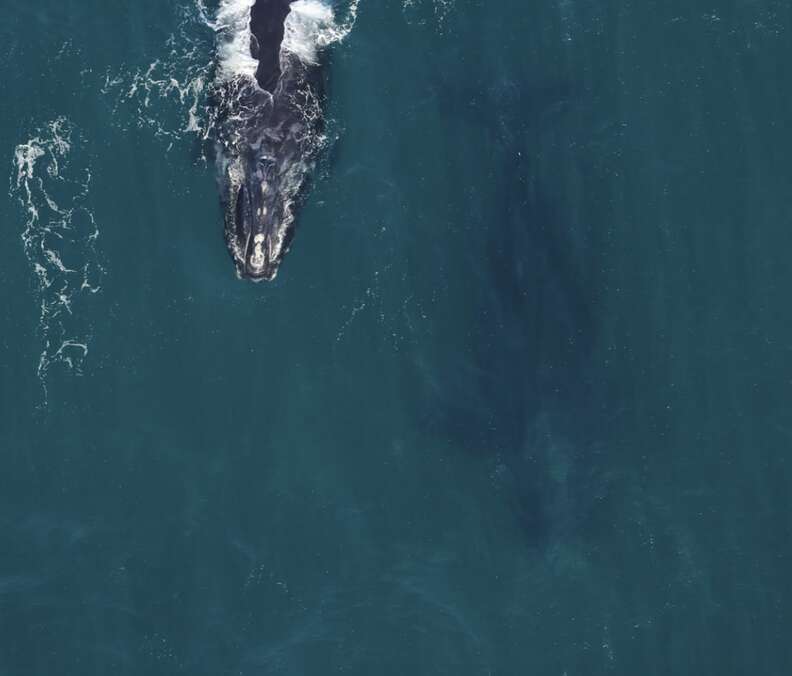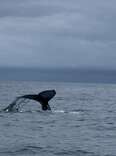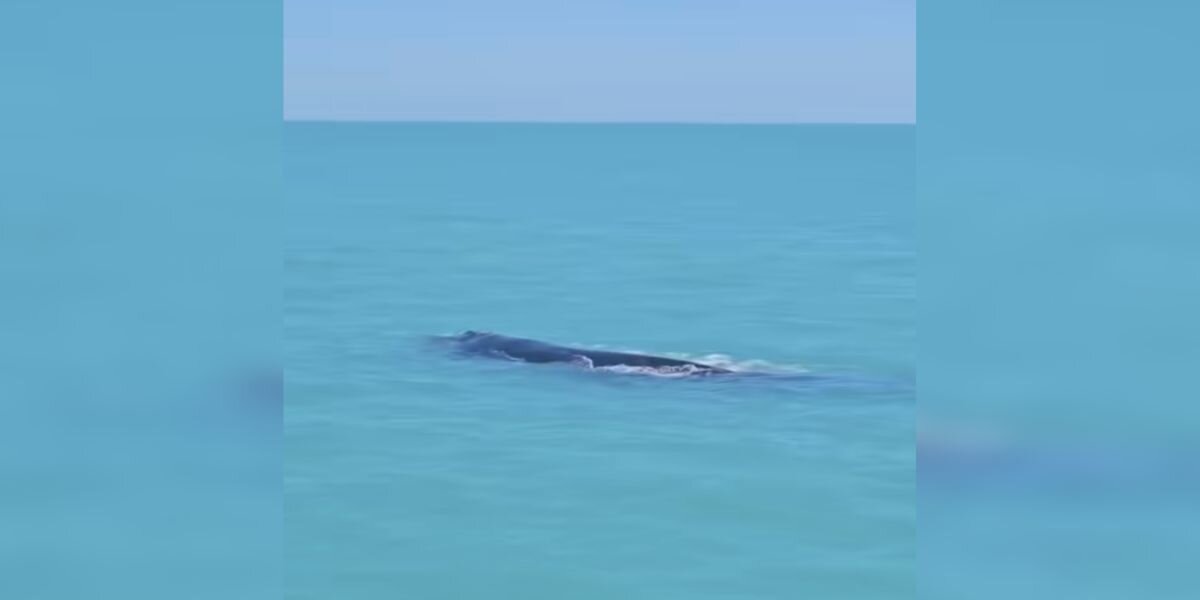Last month, beachgoers and boaters in the Florida Panhandle were on alert, keeping watch for an extremely rare pair of sea animals swimming along the coast. Scientists estimate that there are only about 370 members of this species left, making each glimpse very precious.
The sightings, which Matt Devitt of WINK News called “once in a lifetime” in a Facebook post, were few and far between. Who were these visitors? And why did they cause such a commotion? The dark figures are none other than Koala and Curlew, a pair of North Atlantic right whales.
According to NOAA, North Atlantic right whales are one of the most endangered whale species on the planet, their numbers having been decimated due to commercial whaling. Koala and Curlew’s presence is made even more spectacular by the fact that they’re both adult females. Scientists estimate that of the 370 right whales left, only 70 are females capable of reproduction.
Researchers suspect there’s a high likelihood that Curlew is pregnant, though she hasn’t yet been spotted with a calf.
Julie Albert, of the Blue World Research Institute, told USA Today that it’s unusual to see two adult females making such a journey.
“The fact that they’re still traveling together is fascinating,” she said.
NOAA estimates that these two have been on the move since late last year. Experts are shocked that they’re still side by side.
“While not unheard of, it’s rare for North Atlantic right whales to be sighted in Gulf of America waters,” NOAA Fisheries wrote in an informational post about the whales. “Since 2000, there have only been four other known instances of this occurring.”
 NOAA Fisheries
NOAA Fisheries
The whales have come a long way, and researchers are keeping a close eye on them.
“They’ve traveled more than 2,000 miles since they were first seen in the Southeast U.S. calving grounds in November,” NOAA wrote in a Facebook post. “They’ve traveled from Cape Canaveral in January, all around the Florida peninsula to the Gulf waters of the Florida Panhandle and Alabama in February, and back to Southwest Florida this month.”
Most recently, the pair were spotted off the coast of The Bahamas — an area they’ve never visited before. Animal experts aren’t sure why these two are taking such a strange route.
 NOAA Fisheries
NOAA Fisheries
“[T]here are no recorded sightings of right whales in The Bahamas,” scientist and marine mammal conservationist Philip Hamilton said in a press release. “What inspired them to make this journey will likely remain a mystery.”
Captain Isaac Ellis, of Neal Watson’s Bimini Scuba Center, almost couldn’t believe his eyes when he saw the animals beneath the waves.
“That moment for me was breathtaking, and I couldn’t fully gather myself,” he said in the press release. “I thought it was fake at first.”
NOAA scientists encourage those along the coast to keep an eye out for the whales. If you happen to see them, you should write down the time and location and report the sighting to their hotline, 877-WHALE-HELP. Onlookers are encouraged to take photos and videos while remaining at least 500 yards away from the animals.
Right whales can be identified by numerous characteristics. NOAA mentions their shiny black skin, stocky bodies, flat backs and wide flippers.
If everyone does their part to keep them safe, Koala and Curlew can get where they’re going and finish their puzzling journey in peace.
 Fishermen Admiring Whale’s Tail Suddenly Realize She’s In DangerThey spent three hours trying to help her.
Fishermen Admiring Whale’s Tail Suddenly Realize She’s In DangerThey spent three hours trying to help her.
